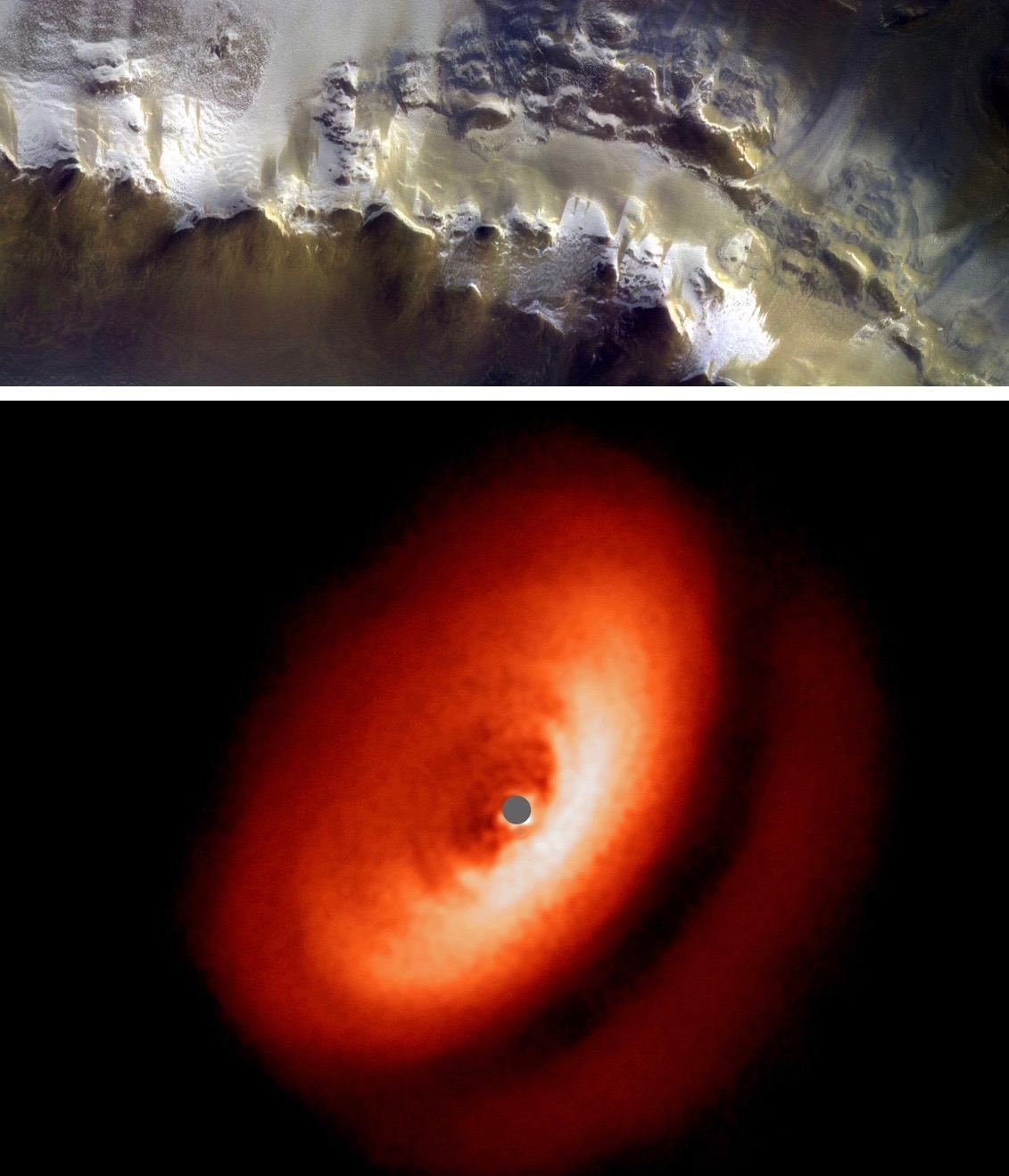Highlights of PlanetS news

From astounding images of Mars and cosmic ravioli near Saturn to distant worlds that might look similar or very different to planets in our solar system – the researchers of PlanetS keep coming up with surprising news that are published worldwide.

Korolev crater on Mars imaged by CaSSIS and the disk around the young star IM Lupi imaged by SPHERE. (Photos ESA/Roscosmos/CaSSIS and ESO/H. Avenhaus et al./DARTT-S collaboration)
Objects shaped like ravioli and spaetzle puzzled the readers of science news. How come that small moons with such peculiar shapes are orbiting Saturn? Researchers of the University of Bern answered this question in May 2018. A much-klicked-on video shows the formation of the cosmic pasta. The video is based on state-of-the-art computer simulations that play an increasingly important role in modern astronomy.
With these sophisticated models the researchers try to understand what the observations are telling them. To speed up the calculations new approaches based on machine learning are also applied, for instance to find out the masses of the famous TRAPPIST-1 planets or to study the chemistry of exoplanetary atmospheres – a success made possible by an unusual collaboration between astrophysicists and medical technology researchers.
New results on atmospheres of exoplanets like the first detection of helium by an international team including members of PlanetS generated great interest and further insights are expected to follow soon. Studying the atmospheres of these distant worlds is especially important because this will remain for a long time the only possibility to search for signs of life outside our solar system.
New findings about the origin, evolution and characterisation of planets – the goal of PlanetS – provided interesting material for many news stories. As the NCCR has established itself in its first four years, the flow of information to the public has steadily increased. From 2014 until 2016, PlanetS and associated members published 24 media releases. In 2017 alone there were 16 news and since January 2018 institutions have already sent out a dozen media releases involving PlanetS researchers. Among them the news that the ESPRESSO instrument on ESO’s Very Large Telescope in Chile had for the first time been used to combine light from all four 8.5m telescopes corresponding to the light gathering power of a 16m diameter single telescope.
As interesting as new instruments and calculations are, it is above all the pictures that fascinate a broad public the most. As examples, let us mention a colour image from the rim of Korolev crater on Mars taken by CaSSIS in April 2018 and the amazingly wide variety of disks around young stars imaged by SPHERE.
More news: http://nccr-planets.ch/news/
Categories: External Newsletter
